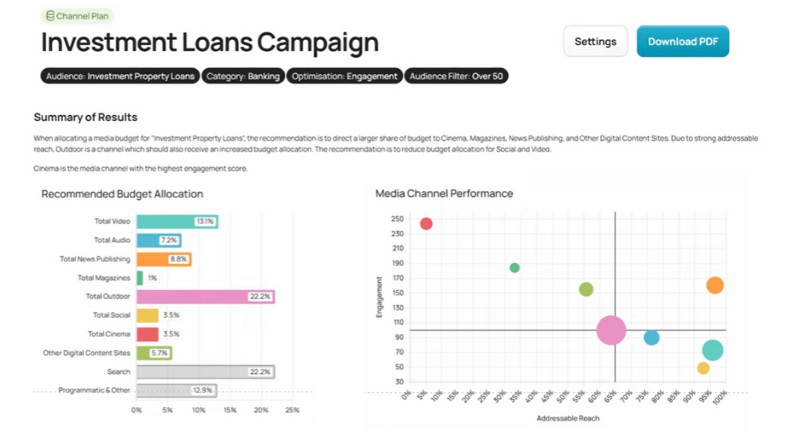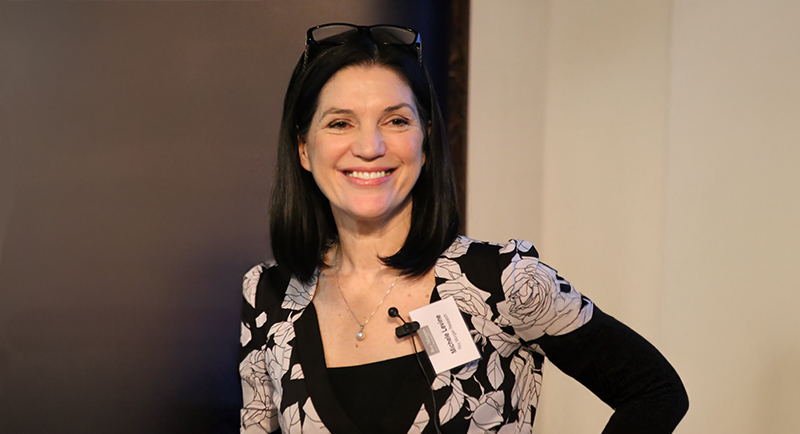By Michele Levine, CEO of Roy Morgan
For years, the media industry has fixated on scale – bigger reach, broader awareness, more impressions. But as the advertising landscape becomes more fragmented, and audiences more selective in how they consume content, one thing has become increasingly clear: not all exposure is equal.
It’s not just about how many people you reach, but how you reach them – and who they really are when they encounter your message.
This growing realisation has triggered a shift in the way marketers and planners think about campaign effectiveness. Today, attention is turning to audience quality: how audiences behave within a media channel, how they feel about it, and how receptive they are to advertising within that environment.
The problem with traditional media metrics
Traditional media planning models have long prioritised reach and frequency. While these metrics are useful, they’re ultimately blunt instruments. They ignore the nuances of attention, loyalty, and media context – factors we now know to be critical in determining how well a message is received, remembered, and acted upon.
For example, consider the difference between an ad seen passively while scrolling through a social feed and one viewed in full-screen at a cinema before a film. Both may count as impressions, but they are not equivalent experiences – and their impact on brand outcomes will differ dramatically.
Yet until now, our planning tools haven’t adequately accounted for these differences.
Introducing the Media Allocation Engine
This is the thinking that led to the development of Roy Morgan’s new Media Allocation Engine – the first platform in Australia to systematically embed media channel attributes and audience behaviours into the planning process.
Built on our AI Workspace and powered by the depth of Roy Morgan Single Source data, the engine allows planners to define target audiences using:
• Over 100,000 pre-built consumer profiles,
• First-party customer data, or
• Our Helix Personas segmentation.
Once an audience is selected, the engine evaluates media channels against a richer set of criteria than conventional planning tools allow. It moves beyond generic reach and CPM metrics, factoring in three key dimensions that drive true media effectiveness:
1. Addressable Reach
This is a truer measure of who can actually be reached – excluding users on premium, ad-free platforms. It provides a more realistic picture of a channel’s deliverable audience.
2. Loyalty
This dimension examines how frequently and deeply audiences engage with a channel. High loyalty often correlates with higher trust and greater responsiveness – especially important when building long-term brand equity.
3. Engagement
Perhaps the most critical of all, engagement considers how focused and attentive audiences are when exposed to advertising – and whether those ads are perceived as additive or intrusive to the experience.
From insight to action
What makes the Media Allocation Engine powerful is its ability to translate these insights into actionable strategies. After analysing the audience and channel dynamics, the platform generates an optimal media mix, complete with budget allocation recommendations.

This allows advertisers to make smarter, evidence-based decisions – aligning media investment with how real people interact with media in the real world.
In doing so, it supports a more nuanced and effective approach to media planning: one grounded in human behaviour, not just media math.
A new standard for strategic planning
We believe the Media Allocation Engine represents a significant step forward for the industry. It offers a practical solution to a long-standing gap in campaign planning – giving planners the ability to quantify and compare media quality, not just quantity.
Steve Allen, Director of Strategy & Research at Pearman Media says of the Media Allocation Engine:
“A revolution in corralling a considerable amount of disparate data into a unified and simple planning tool, which optimises both target audiences and product category.
To this it subsumes revolutionary consumer media preference insights of engagement or loyalty metrics. It takes what a Research based, or Statistical Planner would take hours to compile and assess, in mere minutes. Then able to overlay with other considerations, like creative strategy, messaging and executional assets”
As Vanessa Lyons, CEO of ThinkNewsBrands, observed:
“This is a great tool for advertisers and media planners who want to consider real media attributes and audience behaviours when planning campaigns. It’s time to take a closer look under the hood of some default media channels.”
James McDonald, Managing Director of Audience Group adds:
“Roy Morgan’s new audience planning tool is a welcome initiative that challenges traditional media planning thinking through an innovative online platform. We particularly love the introduction of the ‘ad-addressable reach’ metric, which distinguishes between total audience numbers and the segment actually exposed to advertising — a crucial distinction in today’s fragmented media landscape.”
Lisa Levesque, Deputy Director of Commercial Strategy at ACM says:
“Workspace is a game changer for Roy Morgan. It elevates traditional reach and propensity data, giving strategists and planners a more nuanced view to help optimise media selection. Not all media channels are created equal, Workspace helps you see how certain audiences engage with and commit to different channels. The Media Allocation Engine is sure to stimulate conversations about the best combination of channels to reach audiences across metro and regional audiences”
Early engagement with the industry has been overwhelmingly positive. Advertisers, agencies, and media owners alike recognise the need for deeper planning intelligence – particularly in an environment where accountability, efficiency, and performance matter more than ever.
A launch webinar providing a full demonstration of the engine is available here.
Elevating the industry
Ultimately, our goal is to help lift the standard of media planning across the board. By providing more thoughtful data inputs and a clearer understanding of audience behaviour, we empower media professionals to do what they do best:
• Think critically,
• Challenge assumptions,
• And create campaigns that deliver not just impressions – but impact.
We invite the industry to explore the Media Allocation Engine, test its capabilities, and help us continue to evolve it. Because when we measure what truly matters, we don’t just plan better – we perform better.

